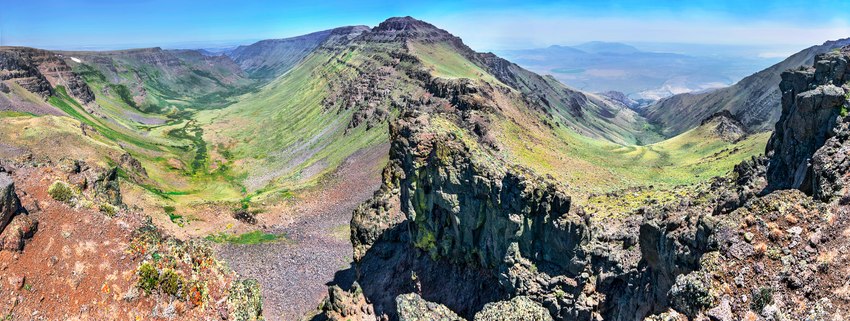Extending north from the cliff where I took this photograph a few summers ago, a sharp divide separates two diverging glaciated valleys: Kiger Gorge on the left and Mosquito Gorge to the right. During a cool, moist climate that lasted from four million to ten thousand years ago, glaciers carved out Steens Mountain's dramatic canyons in southeastern Oregon. Accumulated snow compressed the layers of ice beneath it into thousand-foot-thick glacial flows. These massive ice streams once split in two directions, one flowing north to carve Kiger Gorge and the other moving east down Mosquito Gorge. Their immense weight and downward pressure shaped broad, deep U-shaped valleys. The upper parts of the gorges' walls above the glacial ice are rough and rocky, while the glaciers' abrasive action scoured their basins.
The advantage of Steens’ open and elevated terrain is the opportunity to observe the shape and form of gorges formed of volcanic rock and carved by ice. Its ridge lacks trees, unlike other ranges covered with ponderosa and Douglas fir. Here, where the mountain rises from a low desert base, seed dispersal has not occurred as in other highlands connected by higher ground, allowing tree species to spread from one mountain range to the next.
On this day, the elongated 10,000-foot Steens Mountain crest is covered with wildflowers and grasses that thrive on winter snowmelt and occasional summer showers. It also offered a bird's-eye view of southeastern Oregon's wildfires during the dry late summer of 2018. Often, the high ridge remains clear, while the distant lower elevations are shrouded in smoke. In this photograph, reddish-yellow smoke drifts over the Alvord Desert, more than a mile below.

